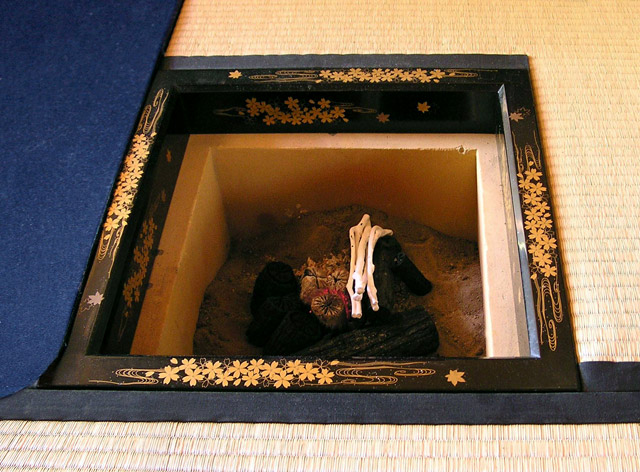|
||
 |
||
In small tea ceremony houses of 4 1/2 mats *yojouhan lτΌ, or less, a plain wooden frame is common. In larger tea ceremony rooms, and in *shoin @ type tea room, frames are lacquered and gold dust may be added. See *makie ͺG. Frames may be made also of black persimmon kurokaki `, or mulberry kuwa K. Occasionally varnish is rubbed into the wood with cloth or cotton.
During the season when the portable brazier is used (from April 1 to October), the mat used with the fixed-hearth is changed and the frame is taken off. When the fixed-hearth is set into the middle board *naka-ta Β, or merely covered with a wooden lid *robuta FW, the frame is also removed, allowing the cover to be level with the surface of either *tatami or naka-ita.

@
(C)2001 Japanese Architecture and Art Net Users System.@No reproduction or republication without written permission.
fΪΜeLXgEΚ^ECXgΘΗASΔΜRecΜ³f‘»E]ΪπΦΆά·B

